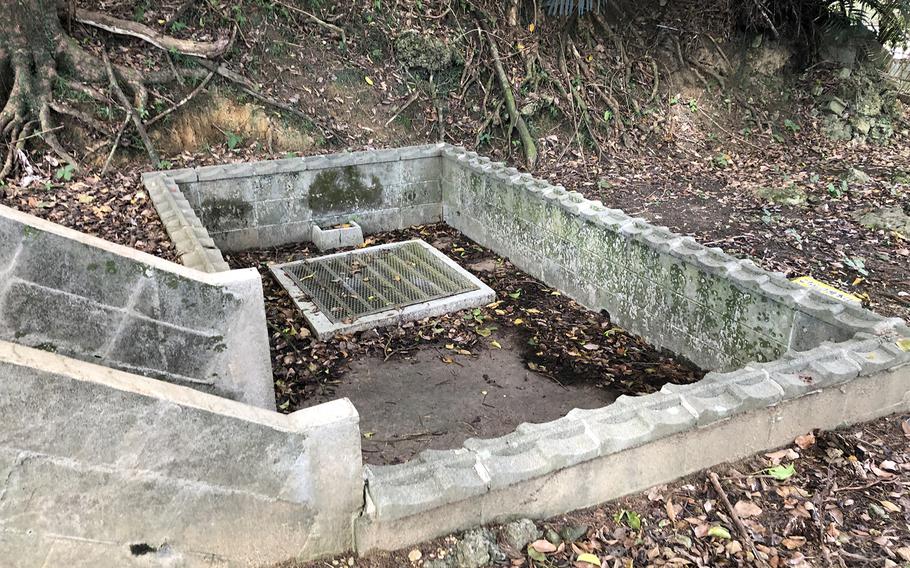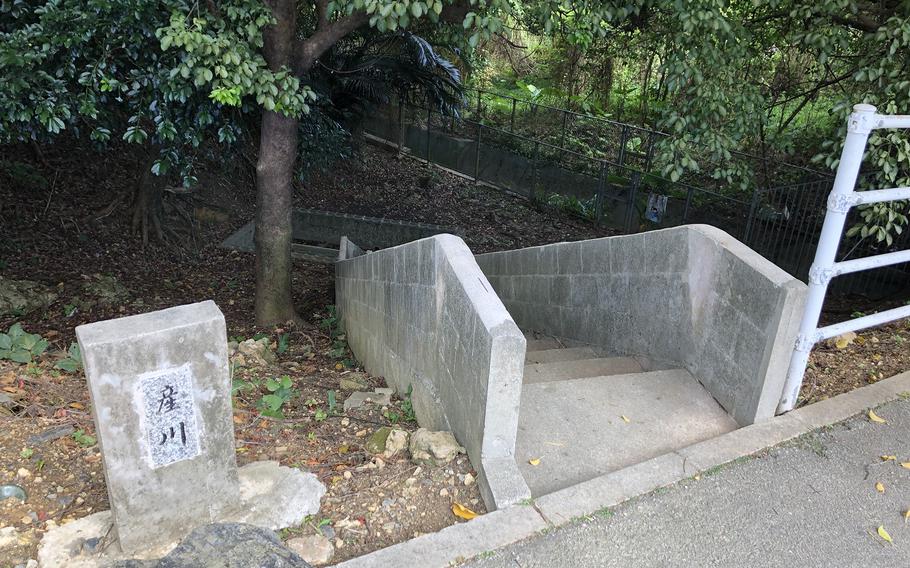Asia-Pacific
Okinawa to expand PFAS testing after samples showed high levels near US bases
Stars and Stripes July 19, 2023

Yara Ubuga, a natural spring approximately 2,000 feet from the northern edge of Kadena Air Base, Okinawa, registered the highest levels of a combined PFOS and PFOA mixture, 1.8 micrograms per liter – 36 times the provisional safety standard. (Keishi Koja/Stars and Stripes)
CAMP FOSTER, Okinawa — Okinawa prefecture plans to expand its search for PFAS contamination to additional sites after tests in February discovered high levels of “forever chemicals” in groundwater around U.S. military bases, a spokesman said Wednesday.
The Okinawa Environmental Protection Division discovered PFAS chemicals above Japan’s provisional safe drinking water standard in 30 of 44 sites it sampled during the biannual groundwater survey, according to a statement Friday from the division. Japan’s provisional standard is 0.05 micrograms per liter.
Yara Ubuga, a natural spring approximately 2,000 feet from the northern edge of Kadena Air Base, registered the highest levels of a combined PFOS and PFOA mixture, 1.8 micrograms per liter — 36 times the provisional safety standard, according to the division.
PFOS and PFOA are examples of PFAS, sometimes called “forever chemicals” because they build up and persist in the environment and in human bodies, according to the U.S. Environmental Protection Agency.
High levels of PFOS and PFOA downstream of Kadena, Marine Corps Air Station Futenma and Camp Hansen point to the military bases as pollution sources, the division spokesman said.

Yara Ubuga, a natural spring approximately 2,000 feet from the northern edge of Kadena Air Base, Okinawa, registered the highest levels of a combined PFOS and PFOA mixture, 1.8 micrograms per liter – 36 times the provisional safety standard. (Keishi Koja/Stars and Stripes)
“We think that the PFAS contamination around Futenma air station, Kadena Air Base and Camp Hansen comes from the bases,” the spokesman said. “We have asked the U.S. to allow us to conduct sampling on base through the Okinawa Defense Bureau multiple times, but we haven't received any response.”
Experts from five Japanese universities and environmental division officials agreed Tuesday in Naha to take groundwater samples at more sites to pinpoint the contamination’s source, a division spokesman told Stars and Stripes by phone Wednesday. How many sites and where to drill will be decided in November, he said.
The defense bureau, which represents Japan’s Ministry of Defense on the island, did not respond to a phone call seeking comment Wednesday. U.S. Forces Japan acknowledged receipt of questions via email that morning but had not answered them by late afternoon. Some government officials in Japan are required to speak to the media on condition of anonymity.
PFAS — manmade per-and polyfluoroalkyl substances — are chemicals used to make coatings and products, from clothing to cookware, that resist heat, oil, stains, grease and water, according to the Centers for Disease Control and Prevention website.
They were also found in firefighting foam that is being removed from U.S. military bases, including those in Japan, according to USFJ.
The EPA updated its health advisories in June 2022 to say no level of PFOS or PFOA in drinking water is safe.
Studies involving lab animals show exposure to PFOA increases the risk of certain tumors of the liver, testicles, breasts and pancreas, according to the American Cancer Society.
Okinawa prefecture has sampled sites around U.S. bases twice a year since 2017, after high PFOS levels were detected in 2016. The most recent round of testing centered on MCAS Futenma, Kadena and Hansen, as well as Camps Foster and McTureous, according to the environment division statement.
The highest combined levels discovered in February around MCAS Futenma came from Aranakigaa, a spring a quarter-mile downstream of the base, which registered .98 micrograms per liter, nearly 20 times the provisional standard.
The environmental division will advise residents not to drink from the affected areas, the statement said.